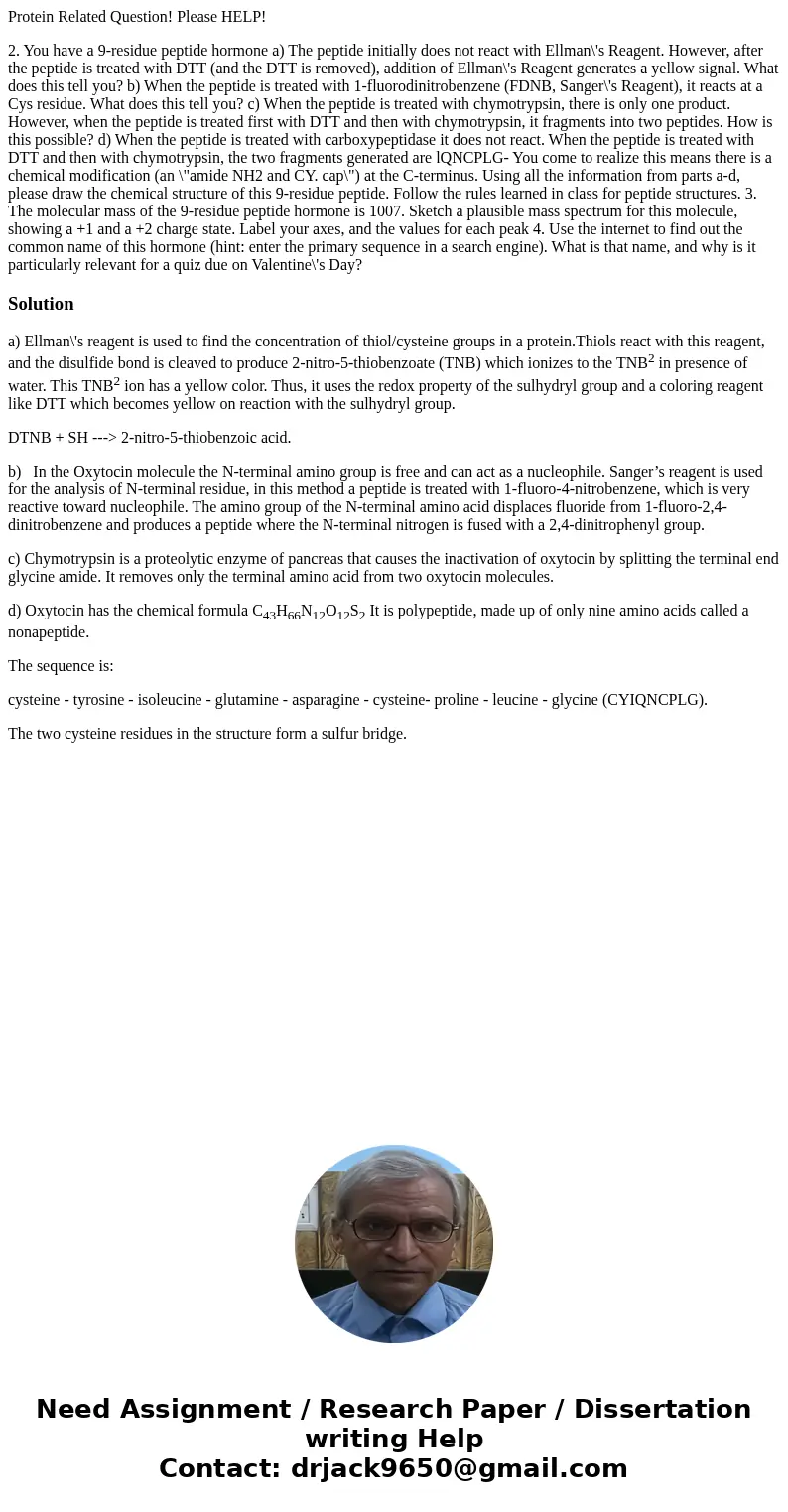Protein Related Question Please HELP 2 You have a 9residue p
Protein Related Question! Please HELP!
2. You have a 9-residue peptide hormone a) The peptide initially does not react with Ellman\'s Reagent. However, after the peptide is treated with DTT (and the DTT is removed), addition of Ellman\'s Reagent generates a yellow signal. What does this tell you? b) When the peptide is treated with 1-fluorodinitrobenzene (FDNB, Sanger\'s Reagent), it reacts at a Cys residue. What does this tell you? c) When the peptide is treated with chymotrypsin, there is only one product. However, when the peptide is treated first with DTT and then with chymotrypsin, it fragments into two peptides. How is this possible? d) When the peptide is treated with carboxypeptidase it does not react. When the peptide is treated with DTT and then with chymotrypsin, the two fragments generated are lQNCPLG- You come to realize this means there is a chemical modification (an \"amide NH2 and CY. cap\") at the C-terminus. Using all the information from parts a-d, please draw the chemical structure of this 9-residue peptide. Follow the rules learned in class for peptide structures. 3. The molecular mass of the 9-residue peptide hormone is 1007. Sketch a plausible mass spectrum for this molecule, showing a +1 and a +2 charge state. Label your axes, and the values for each peak 4. Use the internet to find out the common name of this hormone (hint: enter the primary sequence in a search engine). What is that name, and why is it particularly relevant for a quiz due on Valentine\'s Day?Solution
a) Ellman\'s reagent is used to find the concentration of thiol/cysteine groups in a protein.Thiols react with this reagent, and the disulfide bond is cleaved to produce 2-nitro-5-thiobenzoate (TNB) which ionizes to the TNB2 in presence of water. This TNB2 ion has a yellow color. Thus, it uses the redox property of the sulhydryl group and a coloring reagent like DTT which becomes yellow on reaction with the sulhydryl group.
DTNB + SH ---> 2-nitro-5-thiobenzoic acid.
b) In the Oxytocin molecule the N-terminal amino group is free and can act as a nucleophile. Sanger’s reagent is used for the analysis of N-terminal residue, in this method a peptide is treated with 1-fluoro-4-nitrobenzene, which is very reactive toward nucleophile. The amino group of the N-terminal amino acid displaces fluoride from 1-fluoro-2,4-dinitrobenzene and produces a peptide where the N-terminal nitrogen is fused with a 2,4-dinitrophenyl group.
c) Chymotrypsin is a proteolytic enzyme of pancreas that causes the inactivation of oxytocin by splitting the terminal end glycine amide. It removes only the terminal amino acid from two oxytocin molecules.
d) Oxytocin has the chemical formula C43H66N12O12S2 It is polypeptide, made up of only nine amino acids called a nonapeptide.
The sequence is:
cysteine - tyrosine - isoleucine - glutamine - asparagine - cysteine- proline - leucine - glycine (CYIQNCPLG).
The two cysteine residues in the structure form a sulfur bridge.

 Homework Sourse
Homework Sourse